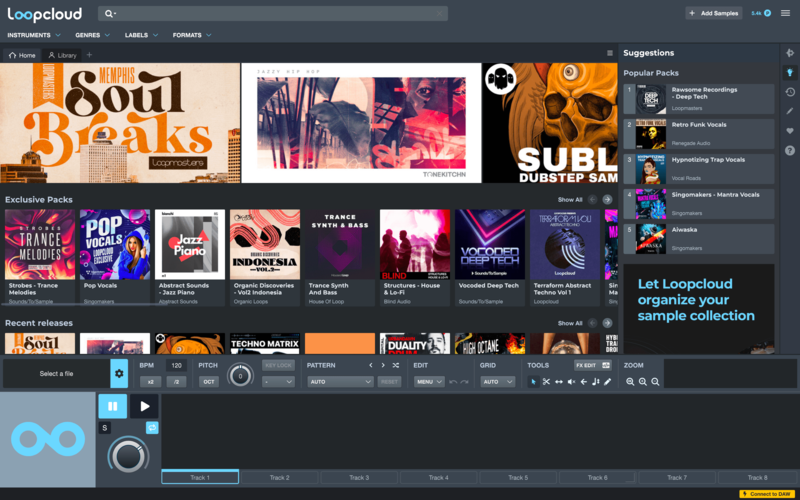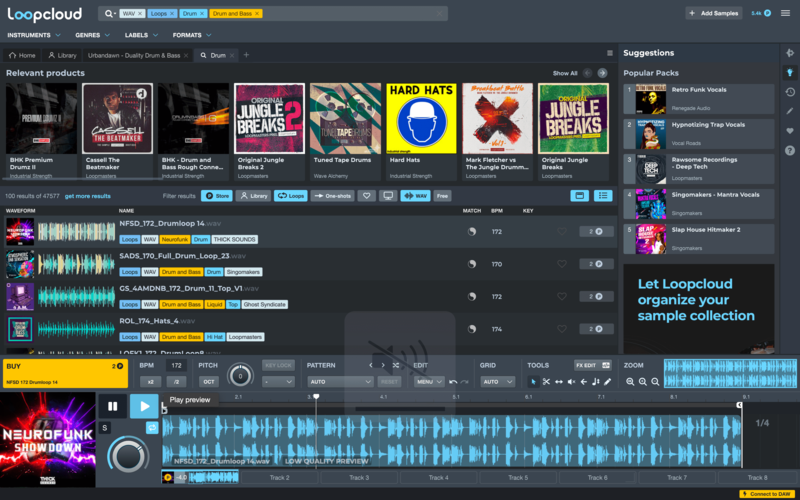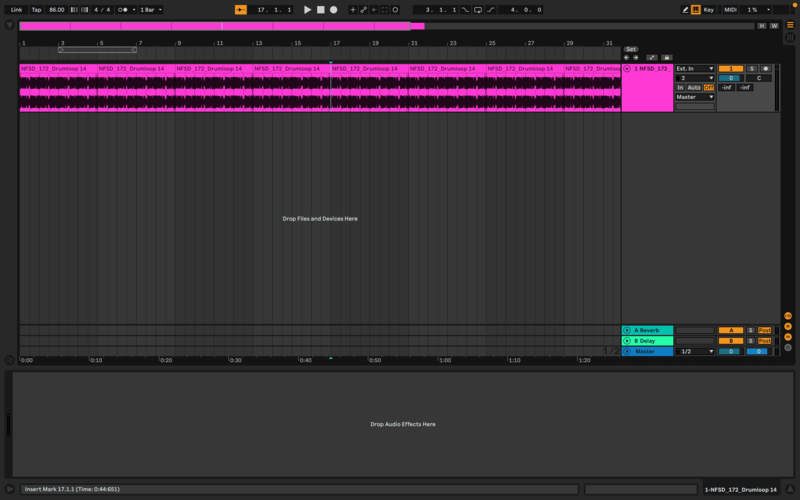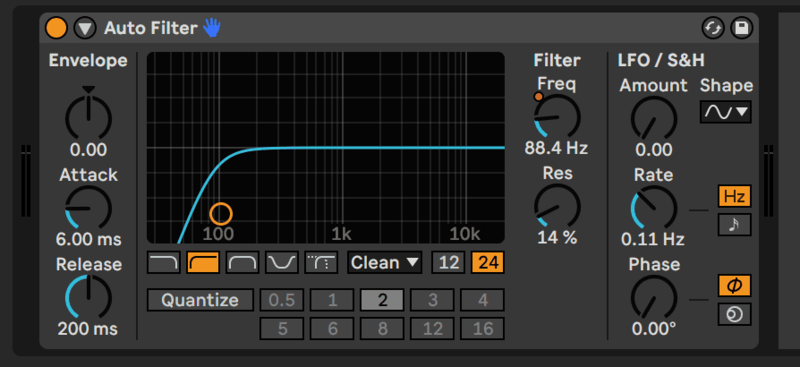Blog
A Guide to Using Repetition in Music Production
14 Feb '2022
Repetition is a crucial device in music that's used in the vast majority of songs ever written. We explore how to make the most of it in your music production.

Repetition, they say, is the mother of skill, but it’s also the mother of music production (well, "mother" may be a bit of a stretch, but it’s certainly important!). From the repetitive structure of electronic music and looped samples, to repeated melodic ideas and delay effects – repetition is a key part of music production in many ways.
Here we’ll explore the many ways that repetition has been incorporated in music production over the decades. Drawing on real examples from classic tracks we hope this article will inspire you to try and add some considered repetition to your own tunes.
Looping
The loop is an absolute staple of music production. In the 60s and 70s the idea of looping a bar of audio for a whole track was frowned upon by many. The popular mindset was that you should record every element in full for the entirety of the track, otherwise it’s not “real” music. More creatively minded artists provided to be exceptions of course – The Beatles famously experimented with tape loops on their later projects.
Since the late 80s and early 90s, the rise of sampling in music production made looping the norm, and nowadays platforms like Loopcloud have made the whole process easier than ever. Genres defined by this technique are hip hop, house, disco edits, and modern pop.
Let’s look at how easy it is to find a loop and place it in your DAW project with Loopcloud.
Step 1: Open Loopcloud
First, open the Loopcloud desktop app. This is a quick and easy way of searching through Loopcloud’s vast library of royalty free samples.

You can make our archives even easier to sort through by loading the Loopcloud plugin in your DAW, which means that the samples you audition in the Loopcloud app play in time with your DAW project.
Step 2: Find a loop you like
The next step is definitely the most fun: it’s time to go virtual crate digging and search through Loopcloud’s incredible loop library for the perfect sample for your track.

You can filter by genre, instrument, mood and much more. Loopcloud’s new AI-assisted matching algorithm will help you find the perfect sample without having to trawl for too long, and the Loopcloud plugin means you can audition samples in time with the rest of your track. You can also filter to only show one shots or loops; in this case we’re looking for loops. Once you’ve found a loop you like, click the Buy button and it’s yours.
Step 3: Drag it in, loop it up
As soon as you’ve found a loop you like, all you have to do is drag it out of Loopcloud into your DAW and loop it in your project – it really is as simple as that!

The Riff
When you think of great riffs your mind probably goes to epic guitar parts such as Slash’s ‘Sweet Child O’ Mine’, Jimmy Page’s ‘Kashmir’, or Kurt Cobain’s ‘Come As You Are’, but riffs can be played on almost any instrument.
A riff is just another word for the fancy musical term ‘ostinato’ which means a motif that repeats throughout a piece. So, by definition: riffs repeat!
The riff is often the most recognisable part of a famous track, and even eurodance-classics-turned-meme material like Darude’s ‘Sandstorm’ have absolutely iconic riffs that you’ll struggle to get out of your head for days.
There’s no secret wisdom that can be shared on how to create an iconic riff, however, the best riffs often feel like they’ve always existed and the musician has merely unearthed them, so when you find a great one you’ll know.
Epic Build Ups
A staple of dance music is the epic build up. You know what we mean – think Fat Boy Slim’s ‘Right Here, Right Now’ or FISHER’s ‘Losing It’.
The essence of a build is a repeating melody over a drum loop, while more and more energy is gradually added over the top until it all breaks down in a bass heavy drop.
A tried and tested way to give the feel of an epic build up before a drop is to gradually automate the cutoff frequency of a hi pass filter to increase so that, just before the drop, there are no sub frequencies in your track. This will make the drop hit that much harder when the bass is reintroduced.

You can add this filter on the master channel to ensure every element is de-bassed at the same rate. To add a little extra air you could also try gradually sending elements to a reverb bus as the build up progresses.
Repeated Melodic Elements
A useful technique when constructing melodies is to have related motifs within the melody to come back to every few bars or so. This means that though the melody will change over time, it consistently has a recognisable element that will help it to resonate with people more quickly.
Let’s find an example of a track that utilises the repetition technique in one of its melodies. Roy Of The Raver’s sumptuous acid flecked ‘Emotinium’ is a prime example of this technique.
The gorgeous 303 melody is written over four bars with each bar being slightly different, however the first half of the first bar, and the first half of the third bar, are identical melodically – this gives the listener a sense of grounding and helps the melody to be cohesive in the story that it’s telling. This melody is present throughout the entire track.
Micro Loops
A technique that’s often used in electronic music is taking tiny snippets of audio files and looping them. These snippets are referred to as “grains” and using them in sound design is termed granular synthesis.
When you get down to the granular level these tiny parts of samples just act as oscillators and so can be used in a granular synth as any waveshaped oscillator would be.

A great free granular synth for Ableton Live users is Granulator II, which you can get for free from Ableton’s website.
Flume is an artist who’s renowned for his use of granular synthesis. It’s particularly prevalent in his track ‘Spring’ written with Eprom. Here the glitchy melodic elements were designed using a granular synthesiser.
So, repetition shouldn’t be thought of as a boring feature of your music, provided you're guided by some of the tips and examples we’ve shown you in the article. Now you know all the ways that repetition can be used in music production it’s time to try a few of the techniques discussed in this article in your own tune.
To help you on your way, why not try out Loopcloud and take advantage of our massive collection of professional, royalty-free samples? You can choose from Artist, Studio, and Professional subscriptions, and trial the world’s largest and most diverse sample library today!

